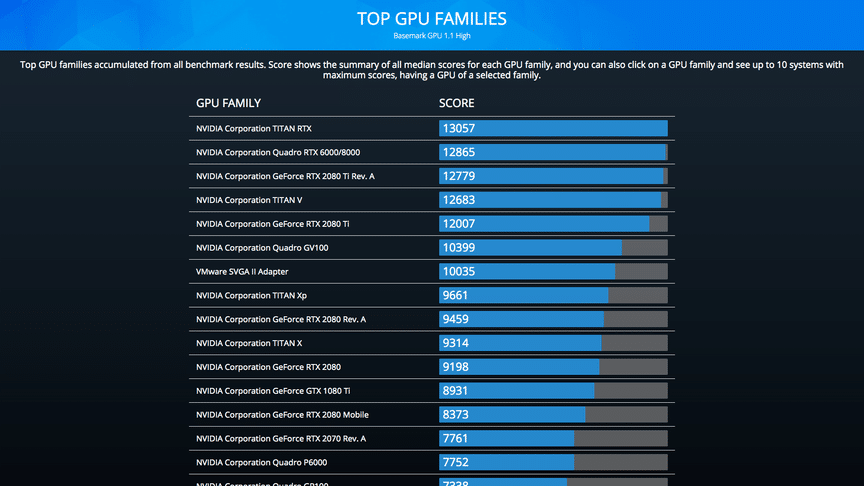Today, we’ll provide you with everything you should be aware of when how to benchmark on your computer gaming system. This will include a short explanation of what benchmarks are and the distinction between synthetic and gaming benchmarks, which components are supposed to benchmark on your system, as well as our top tools to benchmark the components you want to benchmark.
You can rest at ease. If you’re looking to learn how to test your PC, you’re at the right spot. You’ll be able to measure your system’s performance and more before we’re finished.
Table of Contents
What is a Computer Benchmark?
Computer benchmarks allow you to see and assess the performance of your personal computer and other computers in the world. This is accomplished by running specific software (Synthetic Benchmarks) or games (Gaming Benchmarks).
Synthetic Benchmarks
In essence, they’re basically PC tests for performance. They are primarily utilized as a common benchmark regardless of the type of hardware is being employed. They mostly focus on providing you with the performance level you can anticipate.
Gaming Benchmarks
A “real-world” gaming benchmark is most likely the most powerful benchmark you can find. It is achieved by playing a game under an exact scenario many times to determine the performance average of the game using the same settings and hardware. There are some modern games that have built-in benchmarks that gamers are able to play.
What components are being benchmarked?
Full system
These are typically used in situations where you do not want to measure the performance of individual components, which aren’t the GPU or CPU. They provide exact numbers regarding the performance of memory and storage.
Central Processing Unit (CPU)
This is perhaps the most crucial test. While the majority of games use graphics cards, you’ll have to make sure that your processor can play the game you want to play before you purchase it. The performance of the CPU is visible across the entire system, not only in games or in videos, but also on the GPU. Your computer is not able to operate without it.
Graphics Processing Unit (GPU)
The GPU is often known as”the graphics card” is the one that has the biggest impact on gaming performance. This is true even if the game is CPU-based. The benchmarking of the GPU will give you an idea of the performance of the GPU and also reveals any instability.
HDDs (HDDs) along with Solid State Drives (SSDs)
The purpose of this is to check for write and read speeds as well as to detect any issues in the drive.
Random Access Memory (RAM)
This is done to test the single/multi-core bandwidth and also examine latency.
What do I need to accomplish before benchmarking my PC?
Running an application to benchmark is fairly easy. It’s a matter of installing it, starting it up, and then allowing it to run. But there are a few things you’ll need to complete before starting running a benchmark on your computer:
- Shut down all other applications that are not necessary, such as background applications. You want your results to be as precise as you can, and keeping applications running can lower your scores, and CPU scores particularly.
- Make a timer. Although most benchmarks won’t last more than a couple of minutes to run, it can be extended to between 10 and 30 minutes according to your system. Before you begin recording benchmarks, there’s nothing urgent that needs you to handle or that there is something else to do during the time they’re running.
- Be patient. Don’t expect instant results with one of these benchmarking suites and don’t stop the program to get the best results. This might seem like a straightforward decision but it’s scarce in more people than you imagine, which is why we’re repeating it here.
Also, it’s important to note that these benchmarks work for Windows and Windows 10, including Windows 10 (and some are even compatible with Android and iOS devices). Have you covered all the bases? Great. Let’s get benchmarking!
Benchmark My PCs GPU
Unigine Heaven
Although this is an older standard, however, it’s still a top choice by those who love it for a few main reasons:
- It was actually quiet in its day.
- It’s pretty nice looking
Unigine Heaven was released in 2009 However, the GPUs that we’re able to be able to run it at higher settings didn’t come into the market up until 2012 when they launched GTX 600 series. It’s a fantastic benchmarking software that runs on older GPUs and modern ones alike, due to its fantastic features and support of DirectX 11 features and age it is simpler to analyze GPUs from different eras in terms of actual performance..
The greatest part? It’s all free. Although a few of the more advanced functions (like per-frame analysis as well as automated looping of benchmarks) are restricted to higher levels but your benchmarking basics will be fine using the free edition of this benchmark.
Basemark
If you’re looking for another free benchmark test and one that is better… contemporary and modern, we suggest Basemark. Basemark tests Vulkan 1.0 and OpenGL 4.5 and also OpenGL 3.1 support as well as features for additional graphics APIs in the near future. Alongside being accessible for desktop computers and laptops, it’s also accessible for mobile phones and smart televisions, and even automobiles. (Probably self-driving models.)
For benchmarks, the benchmarks are a younger competitor to the scene and will not be very helpful to older GPUs. But it can serve as a fantastic opportunity to check how your current GPU handles graphic effects that are quite heavy such as depth of field advanced lighting, for instance.
3DMark
Not the least, but certainly not the last, is the top industry benchmark: 3DMark. 3DMark is certainly considered to be one of the more well-known GPU benchmarking software available due to its broad range of benchmarks that have been released throughout the last decade. If people are looking to showcase their performance on benchmarks, 3DMark is one of the most popular applications, however, there’s an issue.
It’s not free, in fact. If you’re interested in this feature(even for private use it will be necessary to pay $29.99 unless it’s currently on sale. This being said, 3DMark is certainly worth the cost, but. For the amount you’re paying you’ll get many year’s worth of fantastic graphics benchmarks to run your GPU, as well as an entire community of users to test your results to.
Benchmark my PCs Full System
Novabench
This is a no-cost full system benchmarking software. It has a very user-friendly interface for users, as well as solid, comprehensive results for system performance. After the benchmark is completed and analyzing the results, you’ll see a screen. You also have the option to assess your system’s performance against other systems in the same category.
UserBenchmark
The program is free, easy to use, and also has an extensive community of users. It runs a test on your PC and then compares your results with other users who have similar components. Additionally, you will be able to analyze your PC, find issues with your hardware, and research the most effective options for upgrades.
It is mostly used as benchmarking software for the entire system. But, you can make use of it to benchmark particular components such as the GPU, CPU SSD, HDD, RAM, and USB devices.
- CPU: It includes integer floating, string, and integer.
- GPU It includes six game-like 3D simulations.
- HDD: They include read writing, write, continuous write, and mixed I/O.
- RAM: It includes single/multi-core bandwidths and latency.
This means that UserBenchmark is possibly the most effective free application to benchmark gaming in comparison against PCs belonging to a large number of other gamers.
PC Mark 10

The product is a premium item that you’ll be required to purchase. It offers comprehensive benchmarks for your entire system. PC Mark 10 is easy to use, effective and quick, and offers multiple levels of reporting. All you need is just a click to run. It’s not necessarily a thing that other programs can’t, but it’s more intended for professionals, not users.
If it’s not available for sale, it’ll typically cost about $29.99.
Conclusion
There you are! You now know how to test your PC and the most critical components of it. These benchmarking programs are safe and easy to use. The one additional step required is to purchase when they’re not provided free of charge.
In the end, Do you have any other issues you require assistance with? Are there any issues you think we haven’t covered? If you are having any problems or issues benchmarking your PC please leave a post a comment below and inform us!

David Shaner is a Senior Author of Best FREE Reviews. He lives in the United States of America. He’s best known for Technical Content Writing. He also writes reviews about various products online, gathering information from thousands of customers and compiling them into one.


